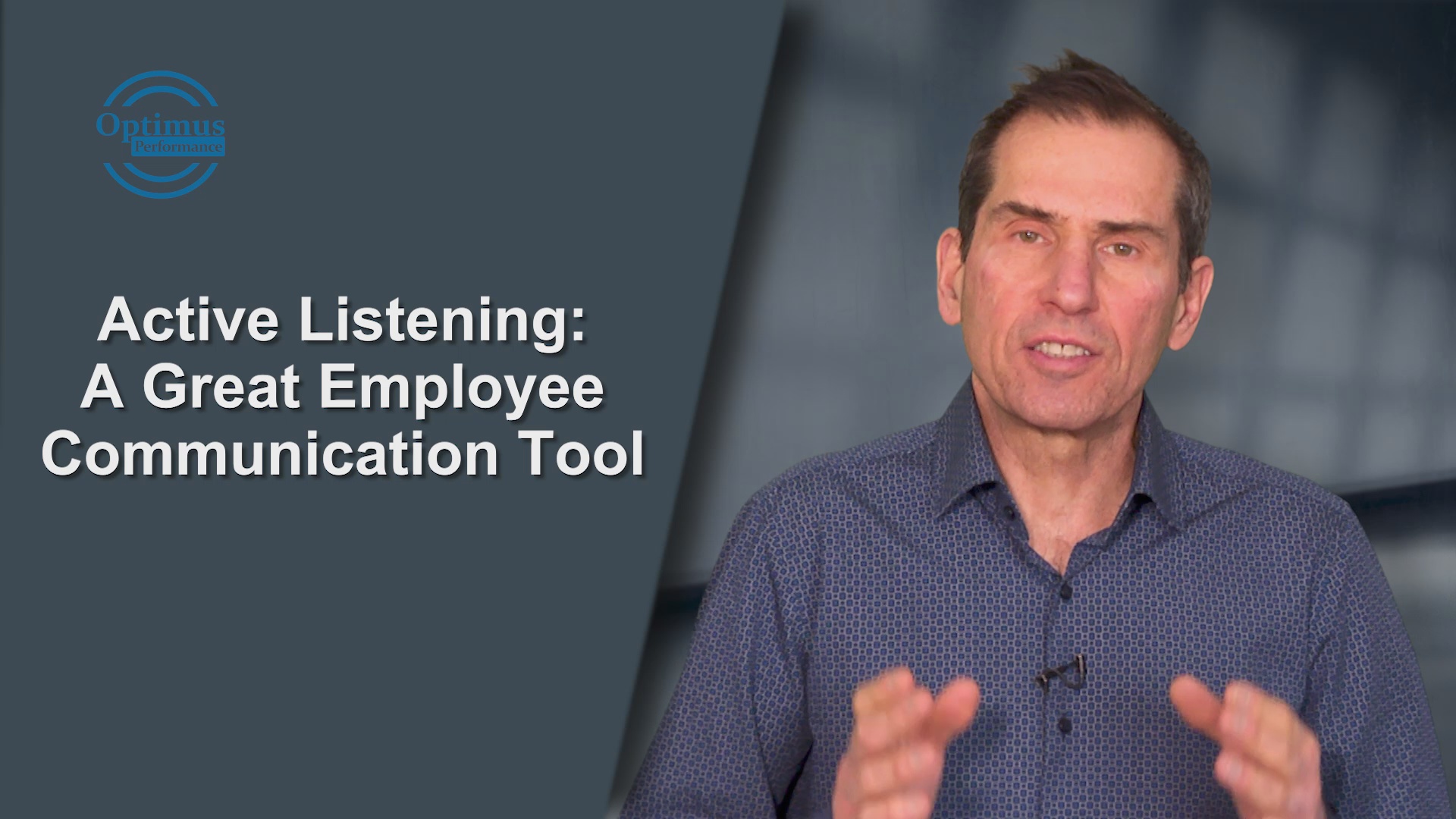Active listening is an essential skill to develop to improve employee communication an prevent conflicts in the workplace. It is also a key skill to learn in Stage II of team development.
If team members do not learn and apply active listening it could serve as an obstacle for the evolution of the team development. This is because evolved and autonomous teams need to be able to discuss issues at length and come to consensus.
Definition of Active Listening
- Active listening is an employee communication tool.
- Active listening is the ability to:
- Pick up
- Define
- And respond accurately to the feeling expressed by another person
Steps to Active Listening
(see video for example and exercise below)
- Acceptance of what is being said
- Feedback of content and feeling
How Do People Behave When they are actively listened to?
- People feel that they are being understood
- People are free to explore their own feelings
- People are free to express their own ideas
- People are less likely to react defensively
Why Should your team use active listening skills?
- Active listening helps team members to:
- Think for themselves
- Diagnose their own problems
- Discover their own solutions
- Trust each other
- Become responsible and independent
Ways to Use Active Listening
- If I understand you correctly . . .
- Let’s see if I understand you correctly . . .
- You mean to say that . . .
- Are you saying that . . .
- What I hear you saying is that . . .
- Am I correct in interpreting what you said that . . .
- Would if be fair to say that you think (believe, feel) that . . .
- I see (understand): you think (believe, feel) that . . . is that correct?
- What you are saying is . . .
- In other words, you believe (feel, think) that . . .
- To paraphrase what you just said . . .
- You seem to believe (think, feel) that . . . is that correct?
- You are saying that . . . is that correct?
- You believe (think, feel) that . . . is that correct?
- I hear you saying that . . . Do I hear you correctly?
When to Do Active Listening
- When you want to establish a relationship of confidence with a person.
- When you want to help a person to better understand himself or herself and to get in touch with his or her emotions and attitudes.
- When you find it difficult to understand what a person is expressing or is living internally.
- When you want to learn more about a person, either about the person’s emotions or their behaviour.
- When you are not sure what style of communication to use.
When Not to Do Active Listening
- When the other person is looking strictly for information or when you need to act without delay.
- When the other person’s behaviour is not appropriate (insults, seduction, aggression).
- When you have the impression that the other person is manipulating you: he or she is talking without stopping to upset you or to avoid talking about something important that should be discussed.
- When a person is not in touch with reality, is bordering on suicide, intoxicated or in a depression.
- When empathic listening no longer offers any new information about the other person’s emotions or the contents of his or her communication
For a practical exercise and example on active listening please consult the PowerPoint worksheet from the document section of my website. You can access all documents though this link. Please bookmark that page for future reference.
